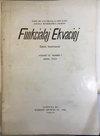一维自组织目标检测模型的指数吸引子
IF 0.7
4区 数学
Q2 MATHEMATICS
引用次数: 1
摘要
Okaie等人利用Keller-Segel模型对移动生物传感器网络进行目标跟踪。他们引入了一个数学公式并描述了数值结果。在本文中,我们将对他们的模型进行分析研究。首先构造模型方程的唯一局部解。其次,建立局部解的先验估计,得到全局解。最后,在构造一个非自治动力系统后,我们将证明指数吸引子的存在性。本文章由计算机程序翻译,如有差异,请以英文原文为准。
Exponential Attractor for One-Dimensional Self-Organizing Target-Detection Model
Okaie et al. [8] utilized the Keller-Segel model for mobile bionanosensor networks for target tracking. They introduced a mathematical formulation and described numerical results. In this paper, we would like to study analytically their model. We first construct a unique local solution for model equations. Second, we establish a priori estimates for local solutions to obtain a global solution. Finally, after constructing a non-autonomous dynamical system, we will show existence of exponential attractors.
求助全文
通过发布文献求助,成功后即可免费获取论文全文。
去求助
来源期刊
CiteScore
0.80
自引率
0.00%
发文量
6
审稿时长
>12 weeks
期刊介绍:
Information not localized

 求助内容:
求助内容: 应助结果提醒方式:
应助结果提醒方式:


